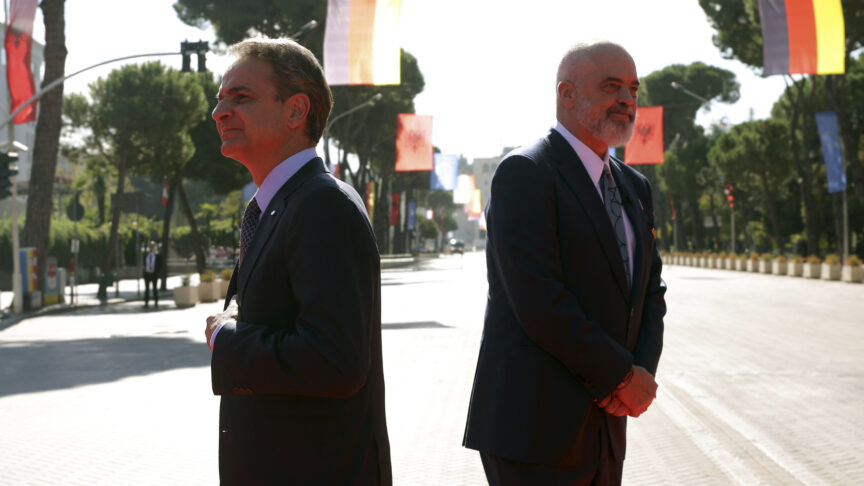Proxy war worsens between Russia and Turkey
The downing of a Russian jet is a blow to Turkish hopes of a “safe zone” in Syria
Turkey’s downing of a Russian warplane yesterday further exacerbates the “proxy war” between Turkey and Russia on the Turkish-Syrian border, potentially slowing down Turkish-led efforts to set up an unofficial buffer zone in that region.
Turkey said that it shot down the Russian SU-24 yesterday morning after the plane violated Turkish airspace near Yayladag, just north of Syria’s Bayirbucak area where Turkish-backed opposition groups had been under heavy Russian bombardment for nearly two weeks now.
Little known outside Turkey, Syria’s “Bayirbucak Turcoman” fighters are concentrated in the strategic area south of the Turkish border town Yayladag and in the northern parts of Latakia which remains a military stronghold and the historic heartland of the Assad regime. Russian advances on the rebel forces there for the past few weeks have been a rallying cry in pro-government papers in Turkey, Islamist Yeni Safak coming out with the emotive headline “Bayirbucak Falls” on 21 November, suggesting 25,000 Syrian Turcomans are facing “massacres” as the militias retreat. Several Turkish nationalist groups held protests since and the Turkish government summoned the Russian ambassador to express criticism.
But this particular escalation, resulting in the downing of the Russian plane yesterday, is far more significant than the back-and-forth of a strategic territory between the Russia-backed regime forces and Turkey-backed opposition groups.
With harsh words from Vladimir Putin yesterday referring to a “stab in the back” and warning of “serious consequences”, Ankara’s relations with Moscow have likely entered a volatile and confrontational period in Syria. Already, the two countries have found themselves in a proxy war, with Turkey vehemently pursuing regime change by supporting various opposition forces and Russia digging its heels in support of Bashar al-Assad.
But there is more.
The Russian advances on Syria’s Turcoman militia also strike a blow to Ankara’s new Syrian strategy to create a “buffer zone” in the 98km stretch of its Syrian border currently controlled by ISIS.
For almost a year now, Turkish officials have been lobbying Washington to carve out a “safe zone” that could be manned by friendly opposition forces and safeguaarded by U.S. and Turkish air cover. While reluctant to commit to an official no-fly zone or provide ground forces, over the past few weeks Washington seemed willing to provide air cover for covert Turkish operations, carried out on the ground by Turkey-equipped Turcoman opposition forces, to clear out an ISIS-free zone.
Last week, U.S. Secretary of State John Kerry admitted – perhaps by accident— that United States was “entering an operation with the Turks” to seal off the 98km of ISIS-controlled territory. Since then, Turkish media has reported that ISIS suffered heavy casualties in the capture of three border villages by opposition forces in operations with Turkish and U.S. air cover.
Turkish designs for a “safe zone” roughly corresponds to the Jarablus-Marea area sandwiched between the two Kurdish controlled enclaves (Afrin in the west and Kobani in the east, both controlled by Democratic Union Party (PYD) forces closely affiliated with the PKK, or Kurdistan Workers Party) and happen to be Islamic State’s gateway to the outside world.
While little is known about the opposition groups that have been involved in creation of this ISIS-free zone, Turkish media and officials admit that they are largely composed of Turcoman brigades (with names like “Sultan Murad”) trained by Ankara. The Turkish idea is to carve out a 100 by 30 km area and create a safe zone for refugees; for Washington, the real aim is to block off ISIS. In all counts, Russia’s advances on the Turcoman militia weaken Turkey’s ability to capture and keep this territory.
It is hard to foresee what Putin’s threat of “serious consequences” will mean in the short run, but the likely theatre of confrontation will again be Syria.
A particularly dangerous flashpoint would be the advance of Kurdish militia in Syria to the west of Euphrates, thus crossing “the red line” Ankara has laid out. Syria’s newly-formed Kurdish enclave is seen by Ankara as a national security threat “on par with ISIS,” as often mentioned by Turkish President Tayyip Erdoğan. Turkish officials have publicly warned PYD to not cross into Jarablus, threatening strikes if the Kurdish forces were to do so.
But the Syrian Kurds have powerful backers as well. PYD enjoys a burgeoning military alliance with Washington and has good political relations with Moscow. Thus far, the group stopped short its westward advance due to Turkish threats and for fear a confrontation with Turkey would jeopardise Washington’s military backing.
Now after the downing of the SU-24, however, Russia will be looking for ways to get back at Turkey. A potential way for Russia to do this would be to support a contiguous Kurdish zone that stretches across Turkey’s southern flank. This would present Ankara with a major challenge and be yet another intensification of the proxy war.
The European Council on Foreign Relations does not take collective positions. ECFR publications only represent the views of their individual authors.


